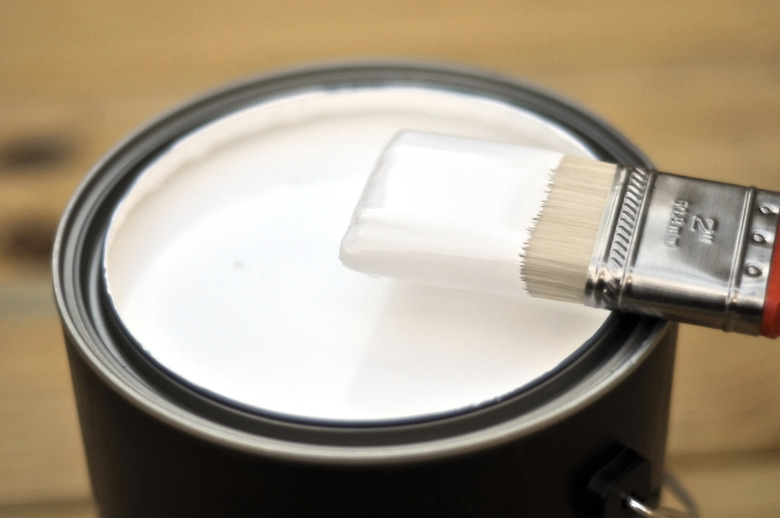How To Turn White Paint Off-White
Off-white is anything but simple. The color is really a whole spectrum of shades that play off each other, off other neutrals, or off more vivid hues to control the feeling in a room and direct the eye. If you're staring down an excess of leftover pure white paint or can't quite find the exact off-white for your next project, mix your own custom color to flatter furnishings or pick out architectural detail. Less is more — a tiny bit of the darker color has a dramatic affect on white paint.
Color Theory
Color Theory
When you want to create off-white paint, you're talking about shade and tone. You mix black with an original color to make a shade — in the case of off-white, a duller white with a hint of gray. To get a tone, mix any color but black or white with an original color. This lowers the reflective light value of pure white as well, but it results in an off-white with the faintest hint of a colored undertone — anything from a warm cream to a cool not-quite-mint to a barely-blush. A tone is always softer than an original color, and a tone of white is less stark than pure white. A few things to know about how your mixing affects how your off-white paint behaves: Warmer tones seem to advance and cooler tones seem to recede. Altering pure white with a pigment — black or a color — causes it to become a bit duller and stand out less because the pigment absorbs some of the light.
The Match -- and Why It Matters
The Match — and Why It Matters
Consult the fixtures in the room to determine the precise off-white you will need. Fixtures can be floors — warm woods with yellow or red tones in them, stone, tile or a prized carpet; architectural features such as a focal-point fireplace; the antique walnut four-poster that dominates any space it occupies; brushed stainless appliances or enameled kitchen cabinets; or a marquee oil painting that will take pride-of-place in the decor. Your primarily gold Oushak carpet could look muddy if the undertone of the off-white on the walls is gray, blue, pink or green. Your linen sofa with the most delicate of pink undertones in the fiber will clash uncomfortably with off-white walls that carry a trace of green or yellow. Off-white is subtle, but it is a color, and it should blend with the other colors in the room, however understated they may be.
Facing the Light
Facing the Light
Create the right shade of off-white for the natural light in a room. You can always adjust the bulbs in artificial lighting, but daylight is daylight, and it will affect the perception of paint color. In a north-facing room, creamy, yellow-based off-whites reflect more light and warm the room; green or gray undertones could be gloomy. South-facing rooms are easy because they get so much full light that you can go cool or warm with your off-whites. Rooms that face east get blue-hued light; work with cool undertones of blue or green for harmony. West-facing rooms are shadowed in the morning but lit with very warm, almost orange light in the afternoon. Either warm or cool undertones can work in this room, but the off-white should be very close to pure white so it adapts easily to the changing light.
On-Trend Off-Whites
On-Trend Off-Whites
If you opt for all-white decor against pure, unadulterated white paint, grab your sunglasses. That space will be dazzling because the white will reflect maximum light around the room, bouncing brightness everywhere. A more sophisticated approach is to select from one or more off-white shades or tones that proclaim your decor style. Your off-whites might include rich ivory, warm sand, buttercream-white, flattering blush, sweet vanilla, chalky oyster-white, fresh white-asparagus, heirloom parchment-white, or cool dove-white. Use more than one off-white in a room, but avoid post-painting regrets by choosing from either a warm or cool palette. Flat white-asparagus walls are framed to advantage by ghostly dove-white enamel on baseboards and trim.
